This document provides an overview of JavaScript basics including variables, data types, operators, conditional statements, loops, functions, arrays, and error handling. It explains JavaScript syntax, how to include JavaScript code in HTML pages, and commonly used statements like if/else, switch case, while and for loops. It also covers JavaScript functions, returning values from functions, and printing pages. The document describes JavaScript strings and array objects, and their associated methods. Finally, it discusses different types of errors in JavaScript like syntax errors, runtime errors, and logical errors.





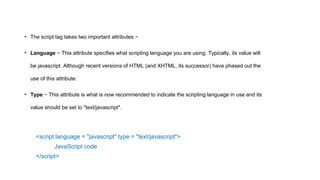
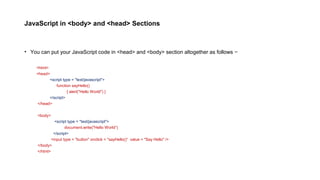

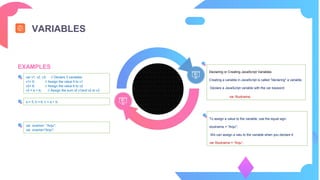

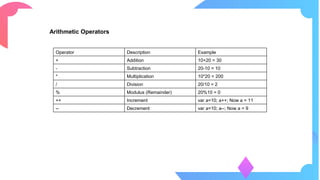
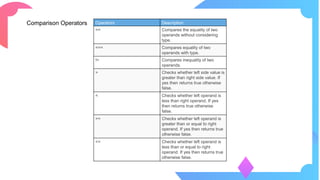

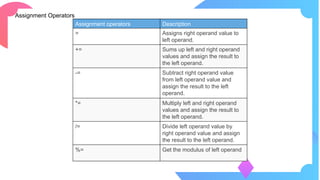
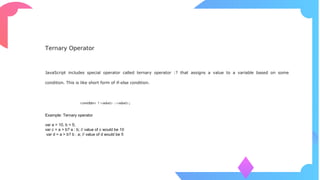


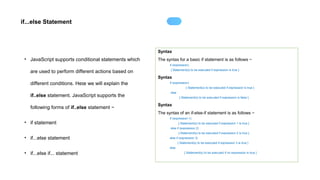
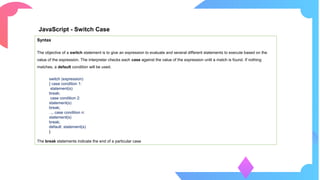
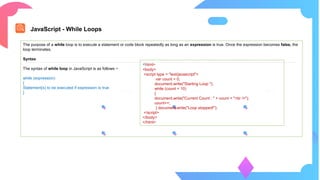

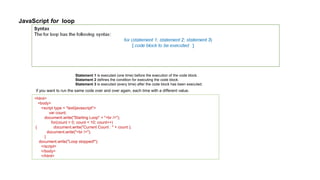
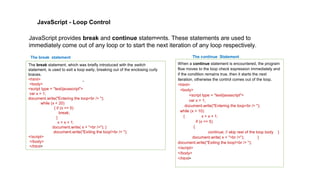
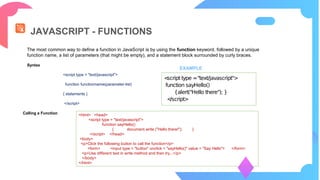

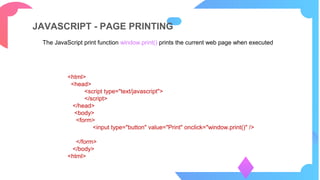
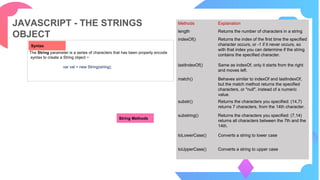

![It stores a fixed-size sequential collection of elements of the same type. An array is used to store a collection of data
JAVASCRIPT - THE ARRAYS
OBJECT
JavaScript array is an object that represents a collection of similar type of elements.
There are 3 ways to construct array in JavaScript
By array literal
By creating instance of Array directly (using new keyword)
By using an Array constructor (using new keyword)
Syntax Creating an Array
Using an array literal is the easiest way to create a JavaScript Array.
var array_name = [item1, item2, ...];
var fruits = new Array( "apple", "orange", "mango" );
JavaScript Array directly (new keyword)
The syntax of creating array directly is given below:
var arrayname=new Array();
JavaScript array constructor (new keyword)
Here, you need to create instance of array by passing arguments in constructor so that we don't have to provide value
explicitly.
The example of creating object by array constructor is given below.
<script>
var emp=new Array("Jai","Vijay","Smith");
for (i=0;i<emp.length;i++){
document.write(emp[i] + "<br>");
}
</SCRIPT>](https://image.slidesharecdn.com/javascriptbasics-200331121737/85/Javascript-basics-29-320.jpg)
![JavaScript - Errors & Exceptions Handling
Runtime Errors
Runtime errors, also called exceptions, occur during execution
There are three types of errors in programming: (a) Syntax Errors, (b) Runtime Errors, and (c) Logical Errors.
Syntax Errors
Syntax errors, also called parsing errors, occur at compile time in traditional programming languages and at interpret time in JavaScript.
Runtime Errors
Runtime errors, also called exceptions, occur during execution
Logical Errors
Logic errors can be the most difficult type of errors to track down. These errors are not the result of a syntax or runtime error. Instead, they occur when you make a
mistake in the logic that drives your script and you do not get the result you expected.
JavaScript implements the try...catch...finally construct as well as the throw operator to handle exceptions.
The try...catch...finally block syntax −
<script type = "text/javascript">
try
{ // Code to run [break;] }
catch ( e )
{ // Code to run if an exception occurs [break;] }
[ finally { // Code that is always executed regardless of // an exception occurring }]
</script>](https://image.slidesharecdn.com/javascriptbasics-200331121737/85/Javascript-basics-30-320.jpg)

